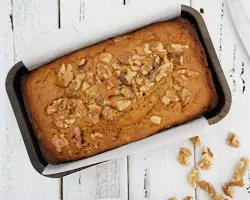Introduction
For a quarter of a century, my back was a prison. Twenty-five years of stiffness, sharp jolts when I bent over, sleepless nights searching for a comfortable position, and a constant shadow of limitation hanging over my life. I’d tried it all: painkillers that fogged my mind, chiropractors offering temporary relief, expensive ergonomic chairs, and even resigned acceptance that “this is just how it is after 40.”
Then I discovered Targeted Spinal Release (TSR)—and it rewrote my story.
This isn’t another quick-fix gimmick. It’s a paradigm shift in understanding why chronic back pain persists and how to unravel it from the root. If you’ve felt abandoned by conventional approaches, this is for you.
Why "Everything Else" Failed Me (And Maybe You Too)
Most treatments focus on symptoms:
Masking pain (medications, injections)
Forcing alignment (adjustments, braces)
Strengthening superficially (generic core exercises)
But they ignore the hidden culprits:
🔴 Fascial Adhesions: Sticky "glue" binding muscle layers, restricting movement.
🔴 Dormant Muscles: Neurological "amnesia" in stabilizer muscles (like multifidus).
🔴 Compressed Joints: Vertebrae jammed by years of tension and poor movement patterns.
🔴 Emotional Armoring: Stress stored as physical tension (yes, your trauma lives in your spine).
What Makes Targeted Spinal Release Different?
TSR isn’t about cracking or stretching. It’s a precise, neurological reset combining:
Fascial Decompression:
Gentle myofascial techniques to melt adhesions between muscle layers.
My experience: Felt like "unzipping" my lower back—sudden warmth and space.
Neuromuscular Re-Education:
Awakening dormant spinal stabilizers with micro-movements.
Key tool: Diaphragmatic breathing synced with pelvic tilts (no more crunches!).
Joint Distraction:
Using controlled traction to create space in compressed discs/facets.
*Simple hack: Hanging from a pull-up bar for 30 seconds daily.*
Nervous System Regulation:
Vagus nerve exercises to dissolve stress guarding the spine.
Game-changer: Humming while rocking gently on hands and knees.
My 4-Phase Protocol to Reverse Decades of Damage
(Always consult a physical therapist before starting)
Phase 1: Decompress (Weeks 1-2)
Goal: Reduce inflammation, create space.
Morning: Cat-Cow with diaphragmatic breath (5 mins).
Midday: Thoracic spine foam rolling (focus on upper/mid back).
Evening: Legs-Up-The-Wall + 5 mins humming (calms nervous system).
Phase 2: Reconnect (Weeks 3-6)
Goal: Wake up dormant muscles, improve proprioception.
Dead Bug Variations: No lower back arching! Place hand under spine to monitor.
Seated Pelvic Tilts: On a stability ball (engages deep core).
"Micro-Wiggles": Seated or standing, tiny oscillating movements to lubricate joints.
Phase 3: Integrate (Weeks 7-12)
Goal: Build resilient movement patterns.
Walking Meditation: Focus on heel strike → midfoot → toe-off.
Hip-Hinge Drills: Practice bending from hips (not spine) picking up a pen.
90/90 Breathing: Sit hips/knees at 90°, breathe into back ribs.
Phase 4: Sustain (Lifestyle Integration)
Goal: Prevent regression.
Workstation Reset: 5 mins mobility every hour (neck nods, seated twists).
Sleep Sanctuary: Side-sleeper? Pillow between knees. Back-sleeper? Pillow under knees.
Stress Detox: Daily 10-min "nerve flossing" (nerve glides for sciatic/femoral nerves).
Pain: Down from 7/10 daily to 1-2/10 (occasional stiffness).
Mobility: Could tie shoes without bracing on my knees.
Energy: No more 3 PM crash from pain exhaustion.
Mindset: Stopped seeing my body as broken.
Critical Mindshifts That Accelerated Healing
"Motion is Lotion": Tiny, frequent movements > aggressive stretching.
Your Spine HATES Static: Sitting is the new smoking. Set timers to shift positions.
Breathe Like Your Spine Depends On It: Spoiler—it does.
Progress ≠ Linear: Some days felt like regression. That’s neurological remodeling.
Gentle Warnings
⚠️ Avoid if: Sharp, shooting pain (get imaging first).
⚠️ Start painfully slow: Your spine needs time to trust movement again.
⚠️ Find a guide: A TSR-trained physio is worth every penny.
Your Spine Remembers How to Heal
After 25 years, I’d forgotten what a "normal" back felt like. TSR didn’t just reduce pain—it gave me back my freedom to garden, play with my dog, and sleep through the night.
Your body isn’t broken. It’s stuck.
Targeted Spinal Release is the key to getting unstuck.
"The spine is a living fossil—it stores every story your body has lived. Release the tension, and you rewrite the ending."
Ready to start? Share your biggest spinal struggle below—let’s problem-solve together!
P.S. For a FREE "3-Minute Spine Reset Routine" PDF (my daily non-negotiable), [click here] – because your freedom shouldn’t wait another 25 years.
Disclaimer: This post shares my personal experience. Consult a medical professional for personalized care. Results vary based on individual conditions.





















.jpg)

.png)
